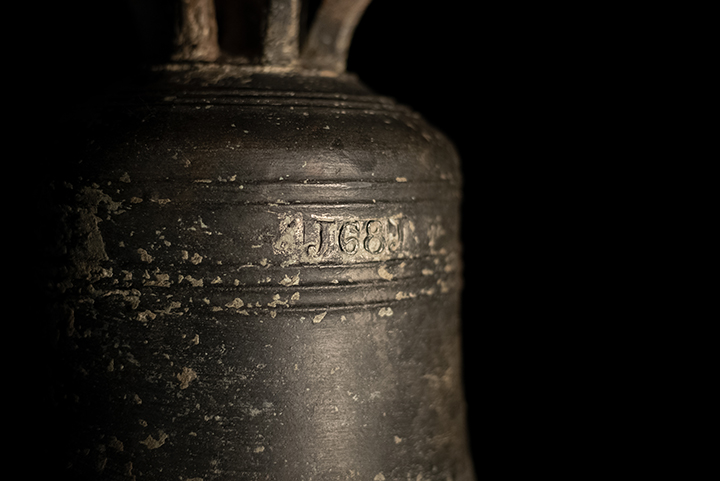The Gloucester exhibition: the loss and rediscovery of a seventeenth-century warship
By: Communications

Between February and September 2023, Norwich Castle Museum and Art Gallery welcomed almost 70,000 people through its doors to view ‘The Last Voyage of the Gloucester: Norfolk’s Royal Shipwreck, 1682’. Visitors were guided through an enlightening and otherworldly exhibition which brought the Gloucester's final voyage and the wreck site to life.
The exhibition, curated by UEA’s Prof Claire Jowitt and Dr Benjamin Redding and Norfolk Museum Services’ Ruth Battersby and Dr Francesca Vanke, highlighted two stories separated by over 300 years. One concerned the ship itself: its loss in 1682 off Norfolk while carrying the future King James II and VII, and the tales of its passengers and crew. The other focused on the discovery of the wreck, and the immense joys and challenges that come with such a find.
The first room, charting the seventeenth-century story of the ship, also aimed to memorialise the people who lost their lives in the tragedy. “We’ve done a lot of work to recover those names because there is no surviving muster list,” says Prof Jowitt.
The second room told the story of the discovery by Julian and Lincoln Barnwell and James Little, and importantly the conservation effort that is required for such precious and fragile artefacts. The curators, through the presentation of items such as the contents of two trunks, many wine bottles and even the ship’s bell, hoped to take visitors on a tour of life aboard the Gloucester during its final journey.
Photogrammetry, the creation of 3D models through the combination of photographs, was used to illustrate how the wreck looks on the seabed. This technology also highlighted changes to the site between 2018 and 2022. Dr Redding explains that “the sand levels on the seabed are changing quite dramatically and it’s really urgent that there’s a proper excavation because unique artefacts are getting washed away.”
Prof Jowitt and Dr Redding also hope that the exhibition has helped to invigorate renewed interest in the seventeenth century – an often overlooked and neglected period of history. “The nation knows a lot about the Tudors and the Victorians, but the Gloucester is a great opportunity to see how exciting and important the seventeenth century is to both British and global history,” says Dr Redding.
Such a major exhibition comes from years of intense work from the curators and the Barnwell brothers. To complement the incredible Gloucester artefacts, and to amplify the ship’s story, important items were borrowed from other collections. “We were really privileged to be able to secure key artefacts from other sources. Through loaned portraits and equipment, including a sounding lead – a tool used to help ships navigate shallow waters – we told the story of the vessel and its passengers. It’s been a lot of work, but we were delighted,” says Prof Jowitt.
‘The Last Voyage of the Gloucester: Norfolk’s Royal Shipwreck, 1682’ was a huge success, helping the museum bring visitor numbers back to pre-covid levels, and receiving glowing feedback from the fascinated public. With the exhibition over, the artefacts are now back in storage until further potential exhibitions are mounted and, hopefully, the construction of a permanent home for them. “The Gloucester 1682 Trust, working alongside their partners including the Barnwells and UEA, aim to create a Norfolk heritage attraction to display the artefacts,” explains Prof Jowitt. It is hoped that a full archaeological excavation of the site will enable the recovery of even more of this ground-breaking discovery.
The UEA team’s research on the Gloucester is funded by the Leverhulme Trust until October 2024. Their recent publications can be freely accessed here:
- Claire Jowitt, 'The Last Voyage of the Gloucester (1682): The Politics of a Royal Shipwreck', English Historical Review, volume 137, issue 586 (2022): 728-762.
- Benjamin Redding, 'The Western Design Revised: Death, Dissent, and Discontent on the Gloucester, 1654–1656', The Historical Journal, volume 66, issue 5 (2023): 945-970.